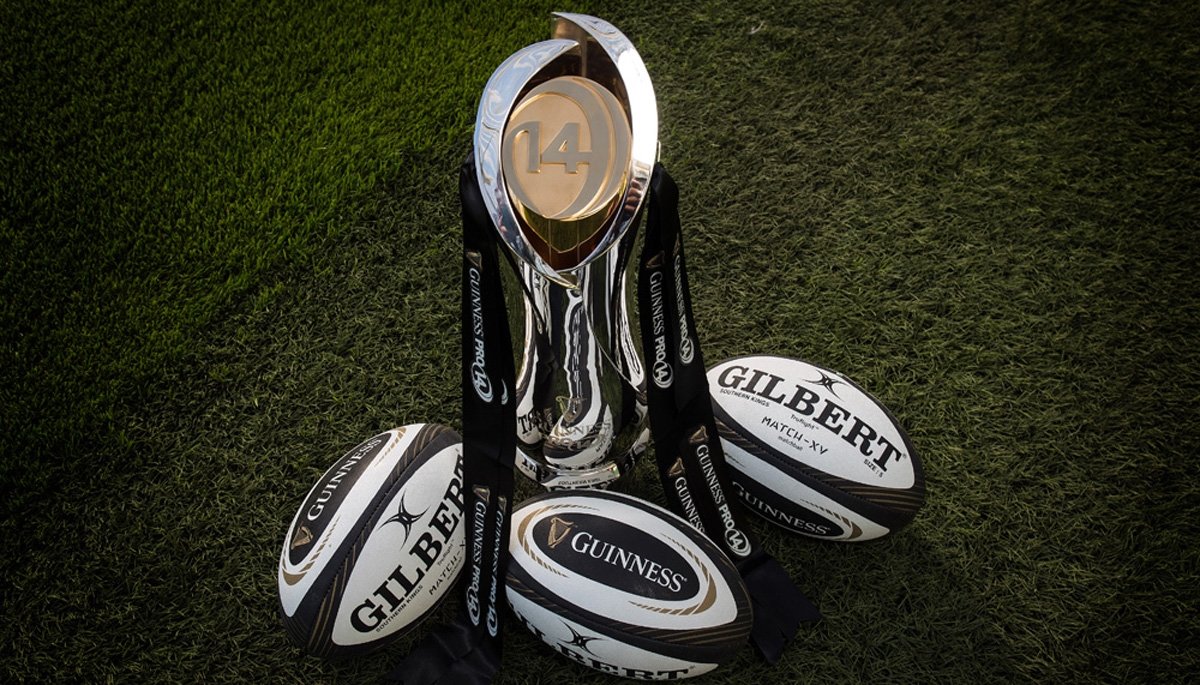Pro14 conference shake-up - The breakdown

The Pro14 has announced the new conferences for the 2019/20 season and it might cause a bit of a stir. Why have they changed, how were they calculated, and what will the league look next season?
Balancing competitive conferences with the demand for domestic derbies is never easy and the Pro14 is no different. Two seasons ago, when the league introduced the two South African teams and moved to a conference format, the organisers put in place a process that was meant to balance those demands while keeping the league fresh over time.
The Pro14 could have chosen to put all four Irish provinces in one conference and all four Welsh sides in the other, splitting the pairs of Italian, Scottish, and South African sides between the two in a way similar to the Super Rugby competition. Given the historical strength of the Irish sides, however, this would very likely have generated lopsided conferences and, with time zones and travel less of an issue for the Pro14 than its southern hemisphere equivalent, other approaches were possible.
The Pro14 decided to rank the teams within their respective countries before distributing them, adding in extra cross-conference derby fixtures to keep fans happy. Moreover, the league committed to changing the makeup of the conferences after two seasons to refresh the competition and allow for improvement in sides, after giving each team a fair set of home and away fixtures with the other conference teams.
So that’s why they’ve changed now, two seasons on. So far, so simple. The process of ranking the teams within their countries, however, is done based on overall points standings at the end of the regular season rather than individual placings in the table. Crucially, it doesn’t take into account the play-offs, which is where things start to look a bit odd.
The distribution is simple enough. Conference A has:
Scotland 1
Ireland 2
Ireland 3
Wales 1
Wales 4
Italy 2
South Africa 1
Conference B takes the remaining teams, which are:
Scotland 2
Ireland 1
Ireland 4
Wales 2
Wales 3
Italy 1
South Africa 2
The combined table, at the end of the regular season, looked like this:
Glasgow – 81 (Scotland 1)
Munster – 77 (Ireland 1)
Leinster – 76 (Ireland 2)
Ulster – 63 (Ireland 3)
Connacht – 61 (Ireland 4)
Ospreys – 58 (Wales 1)
Benetton – 57 (Italy 1)
Cardiff Blues – 54 (Wales 2)
Scarlets – 52 (Wales 3)
Edinburgh – 51 (Scotland 2)
Toyota Cheetahs – 46 (South Africa 1)
Dragons – 26 (Wales 4)
Isuzu Southern Kings – 22 (South Africa 2)
Zebre – 19 (Italy 2)
That makes the conferences for the next two seasons as follows:
Conference A
Glasgow (Scotland 1)
Leinster (Ireland 2)
Ulster (Ireland 3)
Ospreys (Wales 1)
Dragons (Wales 4)
Zebre (Italy 2)
Toyota Cheetahs (South Africa 1)
Conference B
Edinburgh (Scotland 2)
Munster (Ireland 1)
Connacht (Ireland 4)
Cardiff Blues (Wales 2)
Scarlets (Wales 3)
Benetton (Italy 1)
Isuzu Southern Kings (South Africa 2)
What does that mean for the Pro14?
Some of these placings are uncontroversial: Benetton, who made the playoffs for the first time, were unquestionably the better Italian side. Likewise, Glasgow, who lost in the final, had a better season than their Scottish rivals Edinburgh, who didn’t make the playoffs despite a strong start. Cheetahs are a better side the Southern Kings and Dragons have long been the weakest Welsh side.
There are however, two standout consequences of this conference distribution system. The Champions Cup play-off last season was contested between the two fourth-places sides of each conference, Ospreys and Scarlets. Ospreys won, suggesting Scarlets are currently the second best side in Wales. But Cardiff Blues are ranked second because they finished with more points overall than Scarlets, despite finishing fifth in their conference.
Most glaring of all, however, is that Munster are ranked higher than Leinster, the Pro14 title winners last season. Leinster actually beat Munster in the semi-final game before beating Glasgow in the final. For them to be considered a weaker team than Munster could understandably confuse some fans.
Conference A, with the two finalists and a semi-finalist (Ulster) does look to be the stronger conference. However, things change quickly. Scarlets won this league only two years ago and Connacht the year before. Edinburgh couldn’t keep up steam in the final stretch but they looked very strong until that point and you can bet Richard Cockerill will be working hard to improve further. Conference B could easily prove to be a tough battle.
Meanwhile, in Conference A, Cheetahs were in the play-offs last season before struggling this time around and Ulster have had an up-and-down few years of it. Not long ago, even Leinster were struggling to make their mark. It might look lopsided now but recruitment, injuries, and the World Cup means we might be surprised by how this conference allocation plays itself out next season.
The fixtures
The fixture list is yet to be announced. However, just as in the past two seasons, teams will play each team in their conference home and away, each team in the other conference home or away, plus return fixtures with the derby sides of the other conference (so Leinster will still play Munster and Connacht twice, for instance).
The fixture list has also been adapted this season to accommodate the Rugby World Cup, with rounds being played in blocks. The RWC means the season will also start later, on September 27, and finish later, on June 20, 2020.
This is Zebre – Documentary



































































